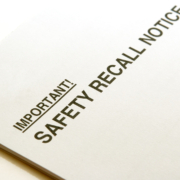Every driver needs insurance, but getting the right amount of coverage can be tricky. At the minimum, you need to meet Arizona state insurance requirements, but buying liability coverage is seldom enough. You should have enough insurance to pay for repairs to your car in case of a collision and to protect yourself if you or the other driver is injured. Choosing insurance requires that you be well informed about your options and responsibilities.
Arizona Requirements
You need to buy car insurance for every vehicle you will be driving in Arizona. The minimumrequired is as follows:
- Bodily Injury Liability Coverage of $15,000 per person or $30,000 per accident.
- Property Damage Liability Coverage of at least $10,000.
- Uninsured Motorist Bodily Injury Coverage of at least $15,000 per person or $30,000 per accident.
- Underinsured Motorist Bodily Injury Coverage of at least $15,000 per person or $30,000 per accident.
Uninsured motorist bodily injury coverage protects you if you are the victim of an accident with a driver who has no auto insurance. In that case, your insurance will pay the medical expenses that result from your injuries. Underinsured motorist bodily injury coverage works much the same way except it protects you if the at fault driver has too little insurance to cover your medical expenses. These policies pay the difference between the at fault driver’s coverage and your actual medical bills. You may also buy coverage for property damage caused by uninsured or underinsured drivers, but Arizona does not require it.
When you are involved in an accident in Arizona or simply stopped by a law enforcement officer, you will need to show proof of insurance. If you cannot provide this proof, you may have your driver’s license or vehicle registration suspended. Getting your license and/or registration back can be a long and costly process.
Gap Auto Insurance
Gap insuranceis so named because it covers the difference between what your car is worth, also known as its actual cash value or ACV, and how much you owe on your vehicle. During the life of a car loan, you may find yourself owing more to the bank than your car is worth. For instance, you may still owe $18,000 on a car that is valued at $13,000. Gap insurance will pay that difference, minus your deductible, if your vehicle is totaled due to the actions of another driver. Gap insurance can save you thousands of dollars if you are “upside down” on your car, something that can happen as soon as you drive your new car off the lot. In the first year of ownership, your new car can lose up to 20%of its value. Gap insurance is not necessary if your car is worth more than you owe on it or if your car is paid off.
Additional Coverage Options
Many drivers opt for higher levelsof insurance than are required by law to better protect themselves in case of an accident. You may have problems deciding exactly how much insurance is optimal for your particular situation. Also, you understandably want to keep your monthly expenses down. However, if you are at fault in an accident, you need enough insurance to protect your assets. In addition to basic liability insurance, you will want bodily injury liability, which pays the medical bills of the people injured in an accident that is your fault. You may choose a 100/300 policy that will cover $100,000 for a single person and up to $300,000 for all the people in the other vehicle. You may also choose much less coverage, such as a 20/50 policy that provides $20,000 for a single person and $50,000 or the all the people in the other vehicle. These policies do not cover the injuries of people riding in your car.
Property damage liability covers the damage done to the other vehicle when you are at fault. You may choose a $10,000 policy, but be aware that many vehicles are quite expensive and $10,000 will not be enough in many instances.
You may also choose to carry personal injury protection or PIP, a policy that covers you and your passengers’ medical expenses after an accident. Some policies even cover your lost wages if you are forced to miss work.
Collision coverage pays for repairs to your car after an accident, while comprehensive insurance covers you if your car is stolen or harmed without being in a collision. For instance, you would be covered if a tree branch fell on your vehicle’s hood.
Experts recommend coverage that equals the value of all your assets. If you don’t carry enough insurance, you will be responsible for the difference between your policy coverage and the cost of the actual damages. In some instances, that amount could cause you financial ruin.
When it comes to auto insurance, you have to consider a number of factors. Obviously, you need a policy that you can afford, but having enough coverage is essential. You may choose a larger deductible so that you can afford higher policy limits. You must meet state requirements, or you risk losing your license or registration. This minimum level of insurance is rarely enough, however. If you are at fault in an accident, you can end up being responsible for costly damages not fully covered by your insurance. In some cases, your home and other assets can be in danger from a lawsuit by the other driver.
When choosing your insurance, consider all of these factors and consult with your insurance expert and your attorney. Buying proper coverage now can save you much financial grief in the future.










